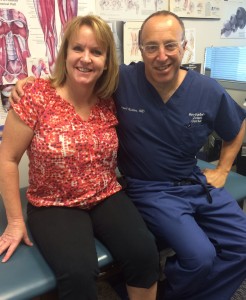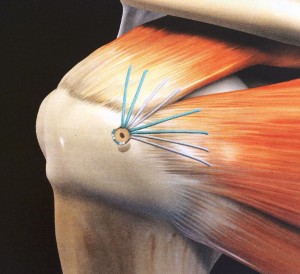The most “minimally invasive” orthopedic surgery.
When debilitating pain, pinching, weakness, and stiffness of your knee, hip, or shoulder limits your daily activities, and conservative methods of treatment (pain medications, physical therapy etc.) fail to provide adequate relief, arthroscopic surgery may be the answer to your problem. Major surgery can be accomplished through two or three small stab-wound “portals” using micro-cameras and mini-shaving instruments. Dr. Kozinn is a skilled arthroscopic surgeon using various minimally invasive techniques in all joints. Typical diagnoses in the knee are torn meniscus (the two C shaped cushion-like cartilages that are shock absorbers in the knee), torn ACL ligament, kneecap grinding and chondromalacia (patello-femoral pain), loose bodies, and osteoarthritis of the knee (surface damage of the smooth hyaline cartilage surfaces). Arthroscopic knee procedures are almost always out-patient surgeries with rapid recoveries. Patients who do not have jobs of physical labor can be back to work in a day or two. Anesthesia can be a “light general” or a “regional”. A spinal anesthetic allows you to be awake (and sometimes you can watch the TV monitor of your own surgery if you so desire). In general, pain is mild after these procedures (often ice works better than the pain-pills), and recovery is fast.

We specialize in all types of shoulder surgery and reconstruction. Most of these procedures are done arthroscopically. Total shoulder replacements are done though a larger “open incision”. Rotator cuff tears are now routinely fixed without big open incisions, and patients go home the same day of surgery with much less pain. We are able to repair the torn tendons by using “suture anchors”, small metal screws that anchor tyhe tendon to the underlying bone. Sliding knots are tied outside the body and pushed into the joint through a cannula to complete the repair. Bone spurs are removed thru the portal with a special burr without making a larger skin incision. patients recover much faster than they did in the days of “open” repairs. Loose joints (instability) can be tightened, and torn cartilages (glenoid labrum tears and SLAP tears) can be anchored down arthroscopically. Shoulder pain in the “weekend warrior” is very common, and should be evaluated by an orthopedic surgeon as there are many effective treatments for shoulder problems. Often a pre-operative cortisone injection mixed with lidocaine helps us pinpoint the area of maximum pain. This is usually confirmed on an MRI of the shoulder before surgery is done. The results of arthroscopic shoulder surgery are generally VERY GOOD. ( The picture below shows an anterior rotator cuff tear that has been repaired arthroscopically with an absorbable suture-anchor.)
A newer area of arthroscopic treatment involves the hip joint. Longer arthroscopic instruments, and a “traction table” allow distraction of this tight joint. Bone spurs can be trimmed, loose bodies can be removed, and labral tears can be debrided or repaired. A “new” diagnosis of FAI (femoro-acetabular impingement” is gaining interest as a probable precursor to more advanced osteoarthritis if not treated early. We are able to treat this problem with a combination of arthroscopic and “mini-open” techniques. Hip replacement surgery can often be delayed with use of this technique. Not every hip is a good candidate for arthroscopy, and often the damage is already advanced. In those cases, total hip replacement done through an “ANTERIOR” muscle sparing approach can greatly facilitate early recovery and minimize pain. ( See Blog on Anterior Hip Replacement on bottom Home page).
Our multi-modal approach to peri-operative pain control ensures minimum postoperative pain. These minimally invasive approaches maximize a patient’s rehabilitation potential and minimize the postoperative hospital stay and complications so that our patients can resume a normal active lifestyle as soon as possible. This is always our goal!